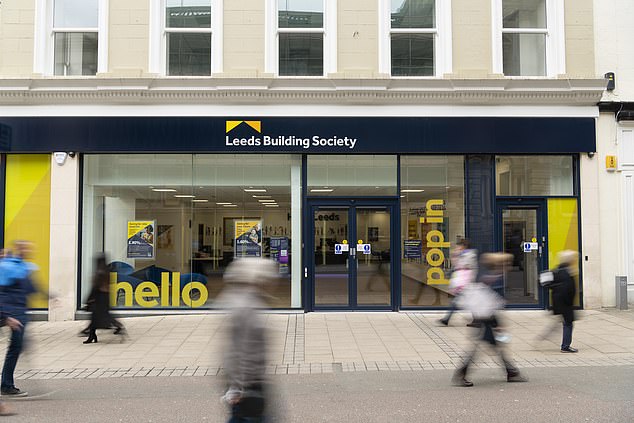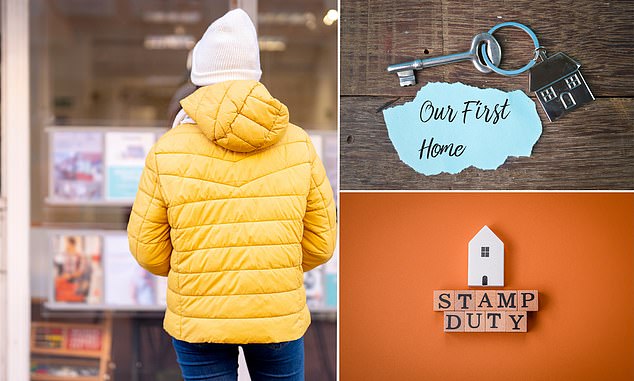More than nine in 10 homes for sale in England will be subject to stamp duty from March 2025, according to new analysis.
The thresholds at which people start paying property purchase tax will return to the levels set before temporary changes were made in 2022, meaning more homebuyers will be drawn online.
The price at which stamp duty starts to be charged will return to £300,000 for first-time buyers, from its current level of £425,000.
For all other buyers, it will be reduced to £125,000 from the current level of £250,000.
The Chancellor is widely expected to decide not to proceed with raising the thresholds at which people start paying stamp duty.
According to Leeds Building Society, buyers will have to pay stamp duty on 93 per cent of properties on the market in England.
At the moment, buyers would only pay stamp duty on 70 per cent of the homes on the market.
When the threshold rises again, the amount owed on a typical home could rise from £2,169 to £4,669, based on the average price of £293,299 in the latest Halifax House Price Index.
In cheaper areas of the country, many more home buyers will have to pay the tax when they currently do not. In Yorkshire, buyers currently pay stamp duty on 49 per cent of homes currently on the market.
However, once the planned changes take effect, this figure will increase to 86 percent of county households.
First-time buyers will lose out
There have been calls for Chancellor Rachel Reeves to maintain the current thresholds permanently, in line with Labour’s promise to put more properties into the hands of first-time buyers.
However, the policy is not expected to be included in tomorrow’s Budget.
The real estate market has changed drastically in recent decades. Data from Leeds BS suggests that house prices paid by first-time buyers were 16 times higher in 2022 than in 1982, while gross income was only seven times higher.
Since the end of 2022, a first-time buyer purchasing a property worth up to £425,000 has not paid any stamp duty. If your house is more expensive, you only pay tax on the part above £425,000.
However, if this limit reverts to the old £300,000 threshold from 31 March 2025, it means the same £425,000 purchase will be subject to a tax bill of £6,205.
At the moment, stamp duty is charged at 5 per cent on the £250,001 to £925,000 portion of the purchase price, 10 per cent on the £925,001 to £1.5 million portion, and 12 per cent over any higher value.

Research from Leeds BS shows that with changes to stamp duty planned in tomorrow’s budget, buyers will have to pay stamp duty on 93% of homes on the market.
Additional stamp duty means it could take longer for first-time buyers to save enough to afford housing, according to Leeds BS.
It says that from March 31, the average first-time buyer renting privately in London will need to save up to an extra 12 months to be able to purchase their own property.
Andrew Greenwood, deputy chief executive of Leeds BS, said: “We all know the value having a place to call home can bring to our lives.
‘As a mutual, we were created to help people own their own home and save for their future, creating a sense of belonging in communities across the country.
‘We welcome the Labor government’s commitment to social and affordable housing and renewed interest in housebuilding, but our country needs to develop a joint long-term plan to improve stability in the housing market if we are to solve the problem.
“This must be a plan focused on delivering more homes, helping first-time buyers save for their deposit and expanding affordable routes to home ownership.”
Some links in this article may be affiliate links. If you click on them, we may earn a small commission. That helps us fund This Is Money and keep it free to use. We do not write articles to promote products. We do not allow any commercial relationship to affect our editorial independence.

